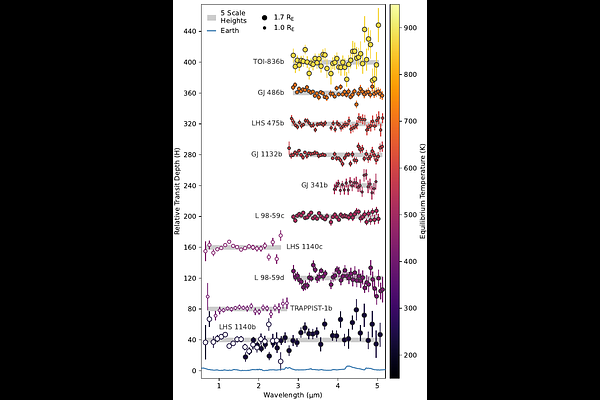A first look at rocky exoplanets with JWST

A first look at rocky exoplanets with JWST
Laura Kreidberg, Kevin B. Stevenson
AbstractRocky exoplanet characterization has been a top priority for early James Webb Space Telescope (JWST) science operations. Several milestones have been achieved, including the most precise rocky planet transmission spectra measured to date, and the first detection of thermal emission for rocky worlds below 800 Kelvin. Despite these advances, no atmospheres have been definitively detected. Several transmission spectra show tentative evidence for molecular absorption features, but these hints are marginally significant and the spectra may be affected by stellar contamination. Features from many plausible atmospheres, including those dominated by oxygen, nitrogen, and carbon dioxide, are below the current noise level. Meanwhile, the emerging picture from thermal emission spectra is that the planets have hot daysides, consistent with either a bare rock composition or low surface pressure atmospheres (< 10 bar). Higher surface pressures and high carbon dioxide abundances are generally ruled out, assuming cloud-free atmosphere models. The absence of strong CO$_2$ features hints at a limited initial volatile inventory or rapid atmospheric escape during the planets' early lifetimes. Taken together, these results motivate a push towards higher precision data, as well as observations of cooler planets that may be more likely to retain atmospheres. As a goal for future transmission spectroscopy, we suggest a "five scale height challenge," to achieve the precision necessary to detect CO$_2$ features in nitrogen-rich atmospheres. Detecting rocky planet atmospheres remains challenging, but with JWST's excellent performance and a continuing investment of telescope time, we are optimistic these uncharted atmospheres will be detected in coming years.